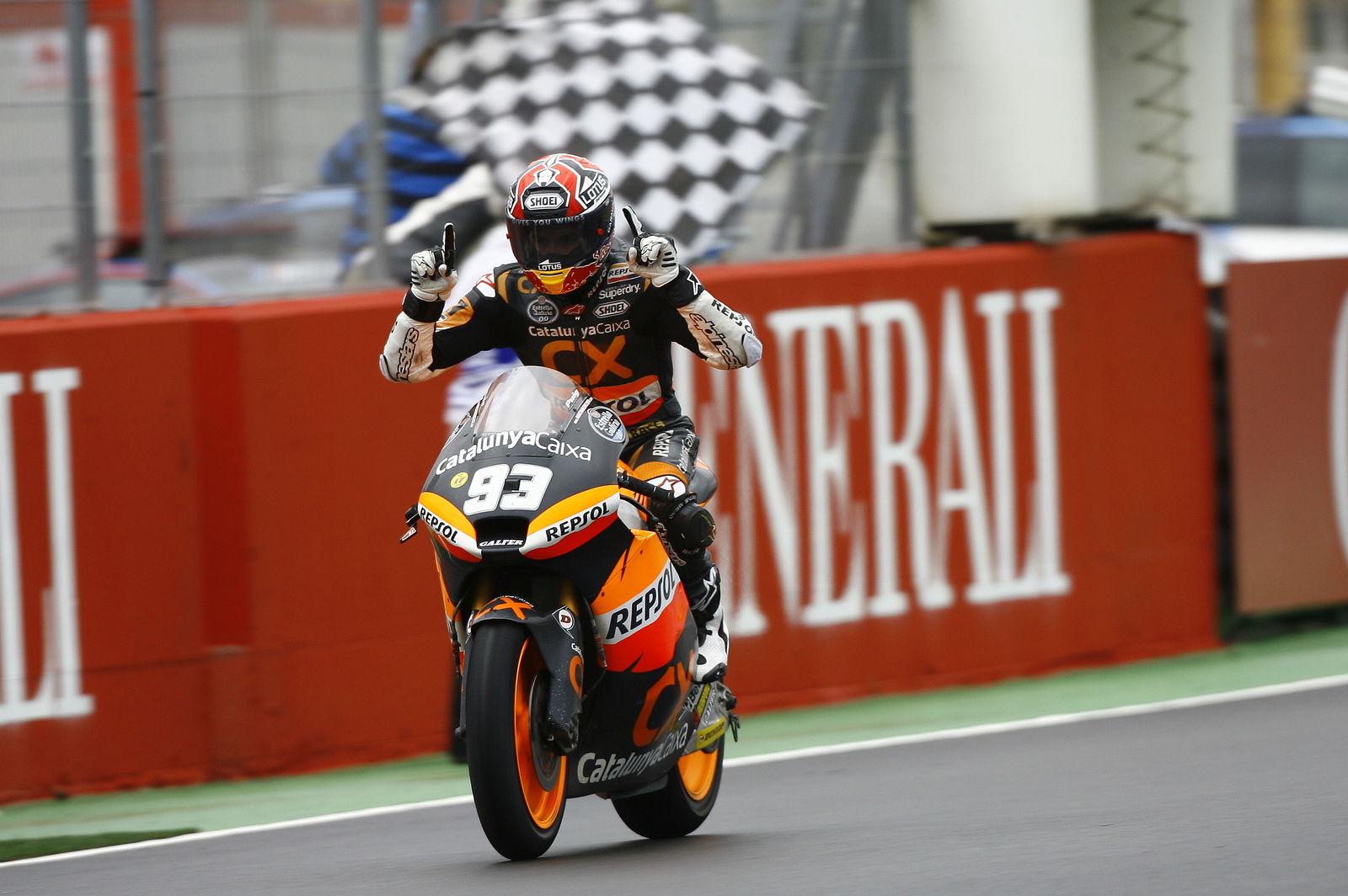Future MotoGP rules announced

After months of speculation and negotiation, an announcement from the Grand Prix Commission on Saturday at the season-ending Valencia round revealed the agreed technical changes for the 2014 MotoGP season.
Attention has been focussed on the potential introduction of a standard ECU and rev limit, touted by Dorna should the MSMA manufacturers - Honda, Yamaha and Ducati - fail to provide their own solutions for cutting costs and closer racing.
Instead a compromise has been reached. The Championship ECU and datalogger - to be offered by Magnetti Marelli from next year - will be made 'compulsory' from 2014.
But the manufacturers will continue to use their own electronics software for their two factory and two satellite bikes, albeit with a four-litre fuel penalty relative to the CRTs (or whatever the privateer bikes will be called in 2014) which will use the 'standard' software.
At present there is a three-litre fuel difference between the manufacturer prototypes and CRTs. CRTs will remain on 24 litres. The software split also means no clampdown on electronic rider aids such as traction, launch and wheelie control.
The manufacturers will be allowed one less engine per rider, per season (from six to five) in 2014, with CRTs staying on twelve engines. Engine development will be 'frozen' during the season. There is no mention of a rev limit.
The statement also confirms that negotiations with the manufacturers are ongoing "concerning the supply of additional machines and engines" and that the rules announced depend on "the satisfactory conclusion" of those discussions by the start of the 2013 season.
Honda is said to be ready to produce a complete CRT-type bike based on its RC213V, with Yamaha willing to offer M1 engines.
Meanwhile in Moto2 a combined rider and bike minimum weight will be introduced - replacing a machine only weight.
This will be set at 215kg and should help bigger riders who currently feel unfairly penalised. The existing Moto2 weight is 140kg, so any rider under 75kg will need ballast. Moto3 already has a combined weight, of 148kg.
Effective 01 January 2014:MotoGP Class
The use of the ECU and datalogger provided by the Championship organisers is compulsory.
MSMA manufacturers, supplying machines for a maximum of four entries per manufacturer, will use their own electronics software but in this case are subject to a maximum fuel capacity of 20 litres.
All other machines must use the ECU, datalogger and software provided by the Championship organisers and these machines may have a maximum fuel capacity of 24 litres.
The maximum number of engines that may be used in a season is limited to:
o MSMA manufacturers machines (Maximum four per manufacturer) 5 engines
o MSMA manufacturers in their first season of participation 9 engines
o All other entries 12 engines
o Engines are frozen for all races of the same season.
In addition to the changes effective 2014, bore and stroke dimensions are frozen for the three year period 2013 to 2015.
Important Note: The above regulation changes are subject to the satisfactory conclusion of ongoing negotiations between FIM, Dorna and the Manufacturers concerning the supply of additional machines and engines for use by other teams from 2014.
Contracts for the supply of these machines, engines, parts and technical support must be concluded between Dorna and the Manufacturers prior to the first event of 2013. Only then will the technical regulation changes be finally adopted.
Moto2 Class
Effective Immediately:
The minimum weight for this class will now be 215 kg being the combined weight of the machine and rider, including the rider's protective equipment, on bike, camera, etc. Ballast may be added to achieve the minimum weight.
Further detail technical regulation changes were approved but publication of these will be postponed until after the next Grand Prix Commission meeting on 13 December.


